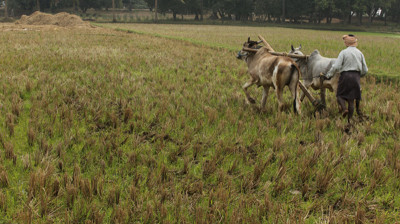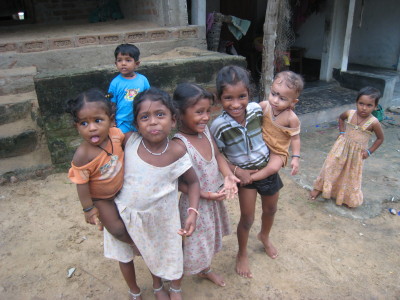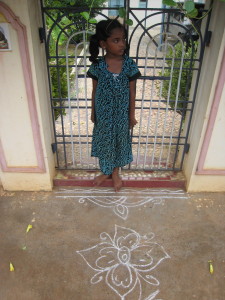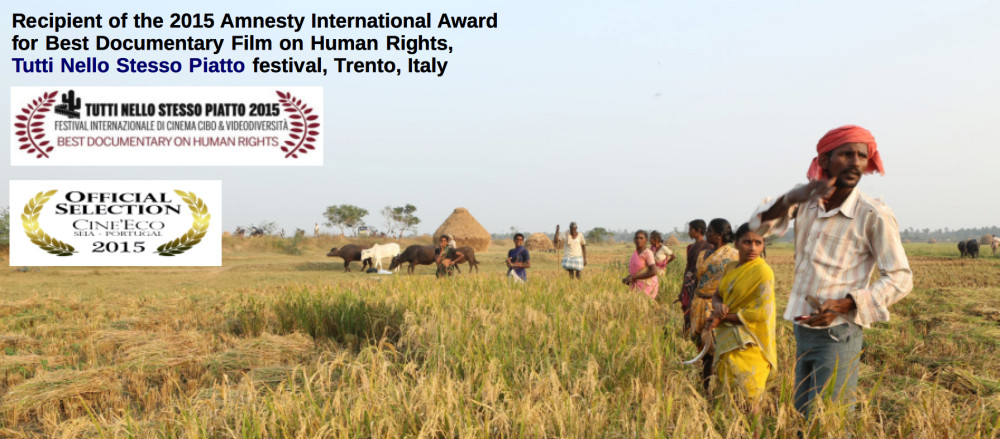What lies behind the opposition of a community of Indian farmer-villagers to an economic-development push that, while claiming to raise up all citizens, is seizing their lands, providing them few jobs, and devastating their lives?

issues addressed in Walls and the Tiger…
A nationwide state-and-corporate economic-development push is forcing many Indian farmer-villagers off their land and depriving them of their livelihoods and age-old ways of life. Walls and the Tiger shows that ongoing process while focusing on the response of one community of South Indian farmer-villagers. The developers’ indifference to their fate has angered them, so they have launched a protest movement that includes demonstrations, civil disobedience, and legal action.
They argue that their government, as well as the corporations that are benefitting from the large-scale project, may claim to be raising up all citizens, but instead are seizing farmers’ lands, providing them few promised jobs, and impoverishing them in a way that their ancient subsistence-farming way of life rarely did.
 The community of farmer-villagers is in India’s Andhra
Pradesh state, in the country’s Southeast.
After initial confusion and frailty in the face of
aggressive government and corporate land grabbers, the
resisters are forcefully making their case that the changes
are inhumane
– a reality that Walls and the Tiger amply
demonstrates. The project is based on government seizure and
sale of lands for two purposes: to build a huge number of new
coal-powered fuel plants, and to set up “special economic
zones” which are quasi-governmental industrial parks. State
governments are handing large tracts of farmland to the
SEZ’s. Their executives then lease the industrial
estates’ land on extremely generous terms to
international companies that undertake to build factories
there. The stated goal of government and SEZ officials is to
increase the manufacture of consumer goods for export to the
West.
The community of farmer-villagers is in India’s Andhra
Pradesh state, in the country’s Southeast.
After initial confusion and frailty in the face of
aggressive government and corporate land grabbers, the
resisters are forcefully making their case that the changes
are inhumane
– a reality that Walls and the Tiger amply
demonstrates. The project is based on government seizure and
sale of lands for two purposes: to build a huge number of new
coal-powered fuel plants, and to set up “special economic
zones” which are quasi-governmental industrial parks. State
governments are handing large tracts of farmland to the
SEZ’s. Their executives then lease the industrial
estates’ land on extremely generous terms to
international companies that undertake to build factories
there. The stated goal of government and SEZ officials is to
increase the manufacture of consumer goods for export to the
West.
That raises the question: How does that process implicate us in the consumption-obsessed “first world” as well as countries with rapidly emerging middle classes, such as China – and India, itself?

Walls and the Tiger underscores that question by showing the devastating effects of India’s efforts to capitalize on established and emerging foreign markets. The officials of the government/corporate project claim no less than that they will convert the subsistence agrarian economy of the majority of southeast Indians – of all Indians – to an industrial base.
In Andhra Pradesh, the agenda depends on the success of polluting factories that in many cases are already faltering. That is occurring even though the state government has provided companies with heavily state-subsidized leases as well as such other generous benefits as 50% to 100% tax forgiveness for their first 15 years of operation.
The architects and beneficiaries of the plan claim it will improve the living conditions of all citizens, but in reality it is providing few jobs for anyone. In that sense, the government and corporation promises to the state’s citizens has proven almost completely idle – and a travesty of any positive kind of “economic development.”
 Andhra Pradesh, the home of the community of
Walls and the Tiger, is proclaimed as “the bread basket
of India” because it feeds not only the state’s residents, but
countless other Indians, too. At risk, then, is the food
security of state and nation.
Andhra Pradesh, the home of the community of
Walls and the Tiger, is proclaimed as “the bread basket
of India” because it feeds not only the state’s residents, but
countless other Indians, too. At risk, then, is the food
security of state and nation.
Walls and the Tiger illustrates the struggle to define rural India’s future in part by presenting detailed portraits of individual farming families. Most frequently, their lives have been devastated, but some are resourcefully opposing the so-called-development agenda. At stake are the villager-farmers’ rewarding bond to their land, their ability to live productively and enjoyably, and their autonomy and pride. Many have lost their land and have been paid scandalously little compensation by deceptive, callous government and corporate officials. The members of such farming families almost instantly descend to economic ruin, geographical displacement, and scrabbling lives in frighteningly arduous physical labor, if they are lucky enough to get even that. They are certain never to attain economic stability and independence again.
The exceptions are the very few villagers who are given generally demeaning jobs in SEZ-based factories, with no labor rights, at all.
Walls and the Tiger depicts a failure of government to recognize the damage being done by a project that is far from proving its worth. The whole push is economically dubious, but it certainly is proving to be a royal banquet for the many individuals at a feeding trough of corruption, many of them government and SEZ functionaries or absentee landowners with illegally large holdings.
Backers of the development push certainly are failing in compassion and vision. So, too, are consumers of the West, very few of whom ever stop to think: What is in those huge container ships that arrive at our ports? What activities generate their contents?
In truth, Western economies – “we” – are imposing a concept of economic and social progress on the developing world that is in our image, not in the images of most of the citizens of the targeted countries. And we’re too infrequently doing it for the benefit of anyone in the target countries – at least, no one other than the people whose corruptibility we entertain, to get our own way.
